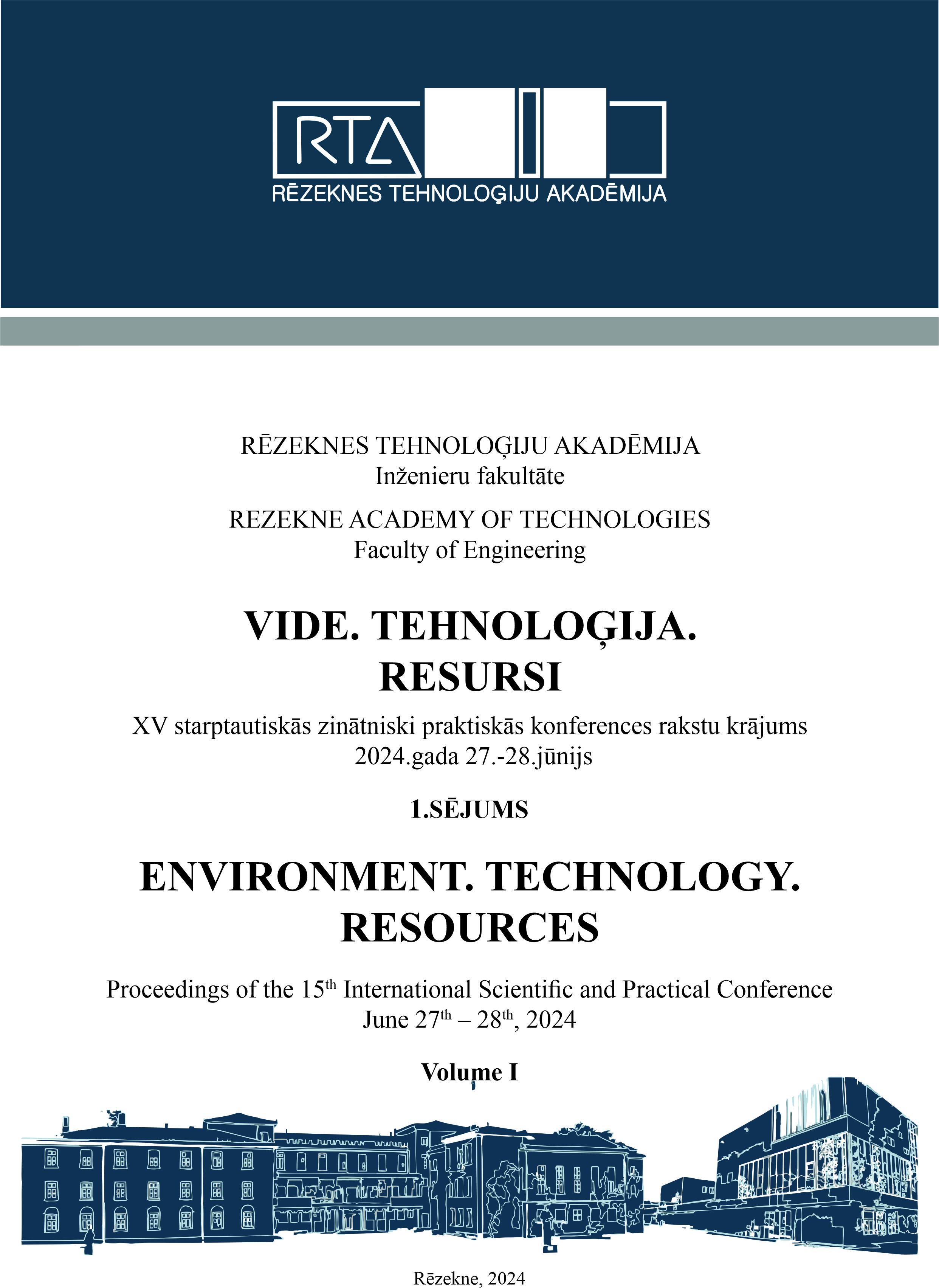QUANTUM COMPUTING APPLICATIONS FOR ADDRESSING GLOBAL WARMING AND POLLUTION: A COMPREHENSIVE ANALYSIS
DOI:
https://doi.org/10.17770/etr2024vol1.8001Keywords:
global warming, pollution, quantum algorithms, quantum computingAbstract
Pollution and global warming become more and more of a threat recently, so creative solutions are required to tackle their overwhelming complexity, surpassing the limitations of traditional computational methods. Using the concepts of quantum physics, quantum computing presents a revolutionary approach for solving such environmental problems. With the help of a variety of data in usage from reputable global scientific sources, including world databases, pollution monitoring networks, and climate models in addition, the current scientific paper explores the quickly developing potential of quantum computing to reduce pollution and global warming. The complexities of quantum algorithms are object of our exploration, focusing on those that have relevance in resource management, in order to shed light on how quantum computers might transform decision-making processes toward global environmental sustainability. Techniques for quantum optimization show promise in maximizing energy grid distribution and reducing waste generation in complex supply chains.
References
M. Imanparast, The prospect of cryptography and computing with quantum computers. 2023.
J. Stolze, D. Suter, and D. Divincenzo, “Quantum Computing: A Short Course from Theory to Experiment,” American Journal of Physics - AMER J PHYS, vol. 73, pp. 799–800, Aug. 2005, doi: 10.1119/1.1938953.
H. A. Bhat, F. A. Khanday, B. K. Kaushik, F. Bashir, and K. A. Shah, “Quantum Computing: Fundamentals, Implementations and Applications,” IEEE Open Journal of Nanotechnology, vol. 3, pp. 61–77, 2022, doi: 10.1109/OJNANO.2022.3178545.
G. T. Sridhar, A. P, and N. Tabassum, “A Review on Quantum Communication and Computing,” in 2023 2nd International Conference on Applied Artificial Intelligence and Computing (ICAAIC), 2023, pp. 1592–1596. doi: 10.1109/ICAAIC56838.2023.10140821.
M. A. Shafique, A. Munir, and I. Latif, “Quantum Computing: Circuits, Algorithms, and Applications,” IEEE Access, vol. 12, pp. 22296–22314, 2024, doi: 10.1109/ACCESS.2024.3362955.
K. Potter, S. Mohamed, and M. Stephen, “Quantum Computing and its Potential Applications,” Comput Intell, Jan. 2024.
R. Subramanian, B. Maheswari, T. Nithya, P. Girija, M. Karthikeyan, and T. Saraswathi, “Quantum Computing: Unveiling the Paradigm Shift and Diverse Applications,” 2024, pp. 95–112. doi: 10.4018/979-8-3693-1168-4.ch006.
M. Imanparast, The prospect of cryptography and computing with quantum computers. 2023.
T. M. Khan and A. Robles-Kelly, “Machine Learning: Quantum vs Classical,” IEEE Access, vol. 8, pp. 219275–219294, 2020, doi: 10.1109/ACCESS.2020.3041719.
R. M. Parrish, E. G. Hohenstein, P. L. McMahon, and T. J. Martinez, “Hybrid Quantum/Classical Derivative Theory: Analytical Gradients and Excited-State Dynamics for the Multistate Contracted Variational Quantum Eigensolver,” Jun. 2019, Accessed: Feb. 26, 2024. [Online]. Available: https://arxiv.org/abs/1906.08728v1
L. Hao, “An Angle-expressed Quantum Evolutionary Algorithm for Quadratic Knapsack Problem,” IOP Conf Ser Mater Sci Eng, vol. 631, no. 5, p. 052054, 2019, doi: 10.1088/1757-899X/631/5/052054.
N. A. Nemkov, E. O. Kiktenko, and A. K. Fedorov, “Fourier expansion in variational quantum algorithms,” Phys Rev A (Coll Park), vol. 108, no. 3, p. 32406, Sep. 2023, doi: 10.1103/PhysRevA.108.032406.
G. De Palma, M. Marvian, C. Rouzé, and D. S. França, “Limitations of Variational Quantum Algorithms: A Quantum Optimal Transport Approach,” PRX Quantum, vol. 4, no. 1, p. 10309, Jan. 2023, doi: 10.1103/PRXQuantum.4.010309.
H. Krovi, “Improved quantum algorithms for linear and nonlinear differential equations,” Quantum, vol. 7, Feb. 2022, doi: 10.22331/q-2023-02-02-913.
N. N. Hegade, P. Chandarana, K. Paul, X. Chen, F. Albarrán-Arriagada, and E. Solano, “Portfolio optimization with digitized counterdiabatic quantum algorithms,” Phys Rev Res, vol. 4, no. 4, p. 43204, Dec. 2022, doi: 10.1103/PhysRevResearch.4.043204.
X. Bonet-Monroig et al., “Performance comparison of optimization methods on variational quantum algorithms,” Phys Rev A (Coll Park), vol. 107, no. 3, p. 32407, Mar. 2023, doi: 10.1103/PhysRevA.107.032407.
L.-Z. Liu et al., “Full-Period Quantum Phase Estimation,” Phys Rev Lett, vol. 130, no. 12, p. 120802, Mar. 2023, doi: 10.1103/PhysRevLett.130.120802.
P. Chandarana, P. S. Vieites, N. N. Hegade, E. Solano, Y. Ban, and X. Chen, “Meta-Learning Digitized-Counterdiabatic Quantum Optimization,” Quantum Sci Technol, vol. 8, no. 4, Jun. 2022, doi: 10.1088/2058-9565/ace54a.
R. Wille, R. Van Meter, and Y. Naveh, “IBM’s Qiskit Tool Chain: Working with and Developing for Real Quantum Computers,” in 2019 Design, Automation & Test in Europe Conference & Exhibition (DATE), 2019, pp. 1234–1240. doi: 10.23919/DATE.2019.8715261.
“Cirq | Google Quantum AI.” Accessed: Feb. 26, 2024. [Online]. Available: https://quantumai.google/cirq
D. S. Steiger, T. Häner, and M. Troyer, “ProjectQ: An Open Source Software Framework for Quantum Computing,” Quantum, vol. 2, Dec. 2016, doi: 10.22331/q-2018-01-31-49.
N. Killoran, J. Izaac, N. Quesada, V. Bergholm, M. Amy, and C. Weedbrook, “Strawberry Fields: A Software Platform for Photonic Quantum Computing,” Quantum, vol. 3, p. 129, Mar. 2019, doi: 10.22331/q-2019-03-11-129.
V. Bergholm et al., “PennyLane: Automatic differentiation of hybrid quantum-classical computations,” Nov. 2018, Accessed: Feb. 26, 2024. [Online]. Available: https://arxiv.org/abs/1811.04968v4
“Introduction to TensorFlow.” Accessed: Feb. 26, 2024. [Online]. Available: https://www.tensorflow.org/learn
“IBM Quantum Learning.” Accessed: Feb. 26, 2024. [Online]. Available: https://learning.quantum.ibm.com/
“Cloud Quantum Computing Service - Amazon Braket - AWS.” Accessed: Feb. 26, 2024. [Online]. Available: https://aws.amazon.com/braket/
“Quantum Virtual Machine | Cirq | Google Quantum AI.” Accessed: Feb. 26, 2024. [Online]. Available: https://quantumai.google/cirq/simulate/quantum_virtual_machine
Downloads
Published
Issue
Section
License
Copyright (c) 2024 Mariana Filipova, Genadiy Gospodinov, Lyubomir Gotsev, Eugenia Kovatcheva, Boyan Jekov

This work is licensed under a Creative Commons Attribution 4.0 International License.



